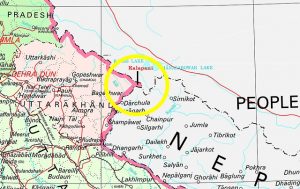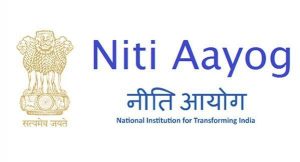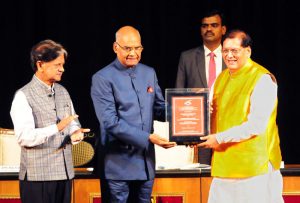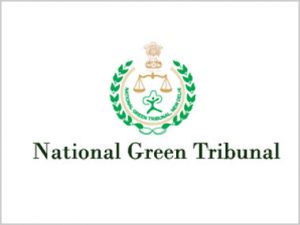Today Current Affairs: 13th October 2021 for UPSC IAS exams, State PSC exams, SSC CGL, State SSC, RRB, Railways, Banking Exam & IBPS, etc
Table of Contents
Global Minimum Tax Deal:

The Organisation for Economic Cooperation and Development (OECD) has announced that a global deal to ensure big companies pay a Global Minimum Tax (GMT) rate of 15% has been agreed by 136 countries (including India).
- The countries behind the accord together accounted for over 90% of the global economy.
- GMT is tailored to address the low effective rates of tax shelled out by some of the world’s biggest corporations, including Big Tech majors such as Apple, Alphabet and Facebook.
- These companies typically rely on complex webs of subsidiaries to hoover profits out of major markets into low-tax countries or Tax Havens such as Ireland, the British Virgin Islands, the Bahamas, or Panama.
- GMT aimed at squeezing the opportunities for MultiNational Enterprises (MNEs) to indulge in profit shifting, ensuring they pay at least some of their taxes where they do business.
- Proposed Two Pillar Solution: The global minimum tax rate would apply to overseas profits of multinational firms with $868 million in sales globally.
- Pillar 1 (Minimum tax and subject to tax rules): Governments could still set whatever local corporate tax rate they want, but if companies pay lower rates in a particular country, their home governments could “top up” their taxes to the 15% minimum, eliminating the advantage of shifting profits.
- Pillar 2 (Reallocation of additional share of profit to the market jurisdictions): Allows countries where revenues are earned to tax 25% of the largest multinationals’ so-called excess profit – defined as profit in excess of 10% of revenue.
- Timeline: The agreement calls for countries to bring it into law in 2022 so that it can take effect by 2023.
- Countries that have in recent years created national digital services taxes (For example, equalization levy by the Indian Government) will have to repeal them.
- The minimum tax and other provisions aim to put an end to decades of tax competition between governments to attract foreign investment.
- The economists expect that the deal will encourage multinationals to repatriate capital to their country of headquarters, giving a boost to those economies.
Ecological Threat Report 2021:

The Institute of Economics and Peace (IEP), an international think tank released the Ecological Threat Report (ETR) 2021: Understanding ecological threats, resilience and peace.
- This is the second edition of the ETR, which covers 178 independent states and territories.
- The ETR includes the most recent and respected scientific research on population growth, water stress, food insecurity, droughts, floods, cyclones, and rising temperature.
Conflict and Ecological Threats:
- Around 1.26 billion people across 30 countries are suffering from both extreme ecological risk and low levels of resilience.
- These countries are least likely to be able to mitigate and adapt to new ecological threats, leading to mass displacement.
- As many as 13 countries faced extremely high and 34 others faced high ecological threats.
- The most vulnerable countries are clustered in the Middle East and North Africa, sub-Saharan Africa and South Asia.
- Ecological degradation and conflict work in a vicious circle, whereby one degradation of resources leads to conflict and vice versa.
- Climate change will have an amplifying effect, causing further ecological degradation and pushing some countries through violent tipping points
Food Risk:
- Global food insecurity has increased by 44% since 2014, affecting 30.4 % of the world’s population in 2020, and is likely to rise further.
- As a region, south Asia is the worst-placed, with water and food risks driving the average ETR score in the region.
- Covid-19 has amplified food insecurity further and will likely have a long-lasting negative impact on world hunger due to stagnant economic growth.
Water Risk:
- By 2040 over 5.4 billion people will live in countries facing extreme water stress.
- Lebanon and Jordan are the countries most at risk.
- Sub-Saharan Africa has the most countries with the lowest levels of social resilience combined with the highest population growth.
- 70% of its population suffer from inadequate access to safely managed water, which will be compounded by high population growth.
Rapid Population Growth:
- Eleven countries are projected to double their population between 2021 and 2050. They are all in sub-Saharan Africa.
- The three countries with the largest projected increases in population are Niger, Angola and Somalia, where the populations will increase by 161, 128 and 113% respectively.
Temperature Anomalies and Natural Disasters:
- From 1990 to 2020, a total of 10,320 natural disasters occurred globally. Flooding has been the most common natural disaster, accounting for 42% of the total disaster count.
- In 2020, 177 countries and territories recorded a warmer average temperature compared to their historical average temperatures.
Kalapani Dispute:

Nepalese political parties have a general consensus over the fact that Kalapani in Uttarakhand is part of Nepal’s sovereign territory, said former Nepalese Foreign Minister. However, India rejected this claim.
- Kalapani is Located in the easternmost corner of Uttarakhand’s Pithoragarh district.
- Shares a border on the north with the Tibet Autonomous Region of China and Nepal in the east and south.
- It is wedged in between Limpiyadhura, Lipulekh and Kalapani.
- The area is the largest territorial dispute between Nepal and India consisting of at least 37,000 hectares of land in the High Himalayas.
- The area is in India’s control but Nepal claims the region because of historical and cartographic reasons.
- The Kalapani region derives its name from the river Kali. Nepal’s claims to the region is based on this river as it became the marker of the boundary of the kingdom of Nepal following the Treaty of Sugauli signed between the Gurkha rulers of Kathmandu and the East India Company after the Gurkha War/Anglo-Nepal War (1814-16).
- The treaty was ratified in 1816.
- According to the treaty, Nepal lost the regions of Kumaon-Garhwal in the west and Sikkim in the east.
- According to Article 5, the King of Nepal gave up his claims over the region west of the river Kali which originates in the High Himalayas and flows into the great plains of the Indian subcontinent.
- According to the treaty, the British rulers recognised Nepal’s right to the region that fell to the east of the river Kali.
- According to Nepal’s experts, the east of the Kali river should begin at the source of the river. The source according to them is in the mountains near Limpiyadhura, which is higher in altitude than the rest of the river’s flow.
- Nepal claims that a land mass, high in the mountains that falls to the east of the entire stretch starting from Limpiyadhura downwards, is theirs.
- India on the other hand says the border begins at Kalapani which India says is where the river begins.
- The dispute is mainly because of the varying interpretation of the origin of the river and its various tributaries that slice through the mountains.
- While Nepal’s claim of the territory east of Kali is based on the Limpiyadhura origin, India says the river actually takes the name Kali near Kalapani.
Nepal has published a revised official map incorporating the territory from the Limpiyadhura source of the Kali to Kalapani and Lipulekh pass in the northeast of the triangular region as its territory.
- Last year, the Cabinet led by Prime Minister K.P. Sharma Oli registered a constitution amendment motion to grant constitutional status to the map.
- Indian observers say this move makes any future solution on the Kalapani issue nearly impossible as a constitutional guarantee will make Kathmandu’s position inflexible.
Nobel Prize For Economic Sciences 2021:

The 2021 Nobel Prize in Economic Sciences has been awarded in one half to Canadian-born David Card and the other half jointly to Israeli-American Joshua D Angrist and Dutch-American Guido W Imbens.
- David Card has been awarded for his empirical contributions to labour economics. Joshua D Angrist and Guido W Imbens won the award “for their methodological contributions to the analysis of causal relationships.”
- The 2020 Nobel Prize in Economic Sciences was awarded to Paul R Milgrom and Robert B Wilson “for improvements to auction theory and inventions of new auction formats”.
- Unlike the other Nobel prizes, the economics award wasn’t established in the will of Alfred Nobel but by the Swedish central bank in his memory in 1968.
David Card: He has analysed how minimum wages, immigration and education impact the labour market. - One of the significant findings of this research was that “increasing the minimum wage does not necessarily lead to fewer jobs”.
- It also led to the understanding that “people who were born in a country can benefit from new immigration, while people who immigrated at an earlier time risk being negatively affected”.
- It also illuminated the role of resources available in school in shaping the future of students in the labour market.
- Joshua Angrist and Guido Imbens: They were rewarded for their “methodological contributions” to the research tool.
- Their work demonstrated “how precise conclusions about cause and effect can be drawn from natural experiments”.
Sustainable Urban Plastic Waste Management In New Delhi: NITI Ayog:

NITI Aayog Vice Chairman Rajiv Kumar has launched the NITI Aayog – United Nations Development Programme (UNDP) Handbook on Sustainable Urban Plastic Waste Management in New Delhi.
- It provides a comprehensive overview of managing plastic waste by representing and discussing components of the entire plastic waste value chain.
- The Handbook can be adopted by urban local bodies to good effect.
- NITI Aayog CEO, Amitabh Kant reiterated the significance of the Re-use, Reduce and Recycle model and the need to create a mass movement around the use of plastics.
Material Recovery Facility (MRF)
- NITI Aayog in this handbook has suggested urban local bodies across states adopt the material recovery facility (MRF) model & implement it as a public-private partnership model for sustainable management of urban plastic waste.
- A materials recovery facility, also known as a materials reclamation facility or recycling facility is a specialized plant that receives, separates, and prepares recyclable materials for marketing to end-user manufacturers.
- The model is initially funded by private players, supported by urban local bodies, and operated by service providers including local organizations and waste management agencies.
- This model ensures compliance with regulations and improves resource utilization.
Lal Bahadur Shastri National Award or Excellence:

Vice President of India presented Lal Bahadur Shastri National Award for Excellence to Director of the All India Institute of Medical Sciences (AIIMS), Dr. Randeep Guleria.
- The Lal Bahadur Shastri National Award for Excellence was instituted by Lal Bahadur Shastri Institute of Management (LBSIM), Delhi, promoted by Lal Bahadur Shastri Educational Society.
- The Award honours each year a distinguished Indian residing either in India or abroad for his/her sustained individual contributions and outstanding achievements of high professional order and excellence in the field of management, public administration, public affairs, education, Institution building, art & culture and sports.
- The honour carries a cash award of Rs. Five Lakh plus a Citation and a Plaque.
- The Award is presented on October 1 each year which the eve of the birth anniversary of Shri Lal Bahadur Shastri is.
- Some of the recent recipients of the Award are Mr. Fali S. Nariman, Dr. Bindeshwar Pathak, Dr. Gopalkrishna Gandhi, Dr. Prannoy Roy, Dr. A. Sivathanu Pillai, Dr. R.A. Badwe, Mrs. Tessy Thomas, late Prof. Yash Pal, Ms Aruna Roy, Shri Sunil Bharti Mittal, Dr. E. Sreedharan, Dr. M.S. Swaminathan, Dr. Naresh Trehan, late Dr. C.P. Srivastava, Ms Ela R. Bhatt, Dr. R.A. Mashelkar, Mr. N.R. Narayana Murthy, Mr. Sam Pitroda and late Prof. C.K. Prahalad.
National Green Tribunal:

The Supreme Court has declared the National Green Tribunal’s (NGT) position as a “unique” forum endowed with suo motu powers to take up environmental issues across the country.
- The court said the NGT need not wait for the “metaphorical Godot” to knock on its portal to flex its considerable muscles to save the environment.
- The exercise of power by the NGT is not circumscribed by the receipt of applications.
- When substantial questions relating to the environment arise and the issue is civil in nature and those relate to the Act, the NGT, in our opinion, even in the absence of an application, can self-ignite action either towards amelioration or towards prevention of harm.
- Supreme court dismissed objections from the Centre, legal experts and even the court’s own amicus curiae who all argued against the NGT clothed with suo motu powers.
- The court explained that the role of the NGT was not simply adjudicatory in nature. The tribunal has to perform equally vital roles that were preventative, ameliorative or remedial in nature.
- The judgment described the NGT “as a complimentary, competent, specialised forum to deal with all environmental multidisciplinary issues both as original and also as an appellate authority, which complex issues were hitherto dealt with by the High Courts and the Supreme Court”.
Rajasthan’s Marriage Registration Bill:

The Rajasthan government has rolled back the Rajasthan Compulsory Registrations of Marriage Amendment Bill, 2021, after it got embroiled in controversy for making it mandatory to register all marriages, including those of minors.
Key Provisions of the Bill:
- The Bill sought to amend Sections 5 and 8 of the Act, dealing with the appointment of Marriage Registration Officers and the duty of parties to a marriage to submit the memorandum for registration.
- The amendment authorises the women above 18 years to provide information of their marriage on their own.
- The amendment amends Section 8 of the Rajasthan Compulsory Registration of Marriages Act, 2009, which deals with “Duty to submit Memorandum”.
- The original provision in the law required mandatory registration of marriage within 30 days if the bride and bridegroom were under 21 years of age.
- The age criterion for both men and women was the same. The registration was to be done by their parents.
- The amended version said the parents must register the marriage within 30 days of the wedding “if the bride is under 18 and the bridegroom is under 21”.




